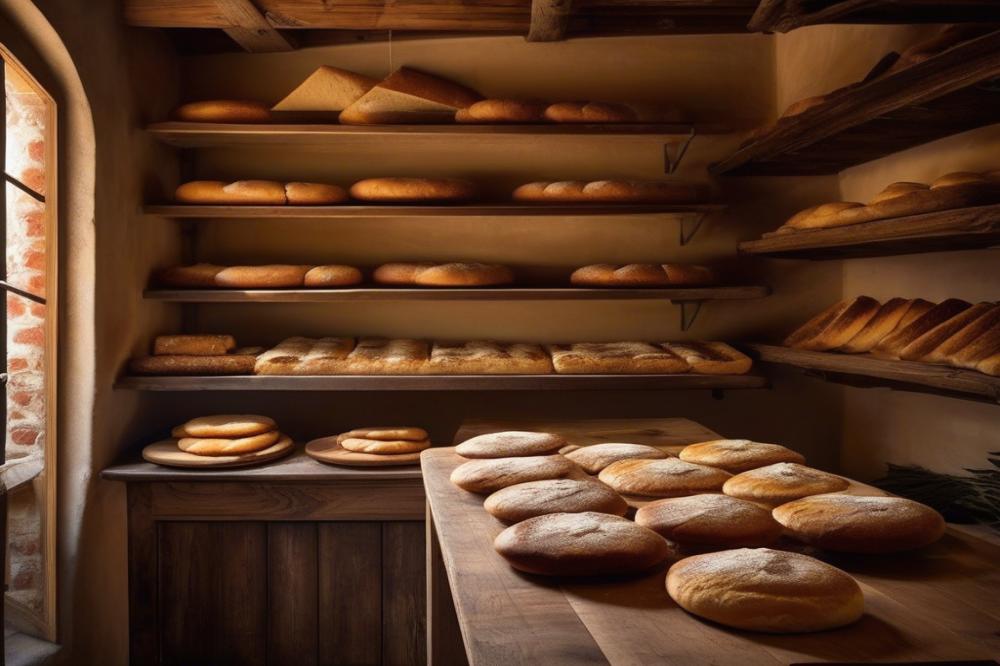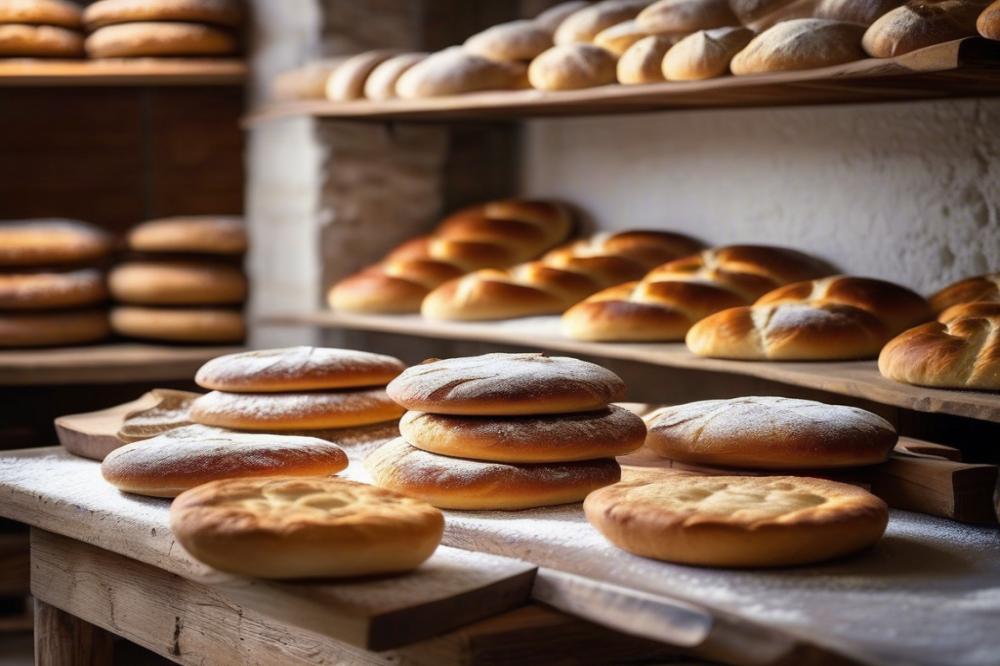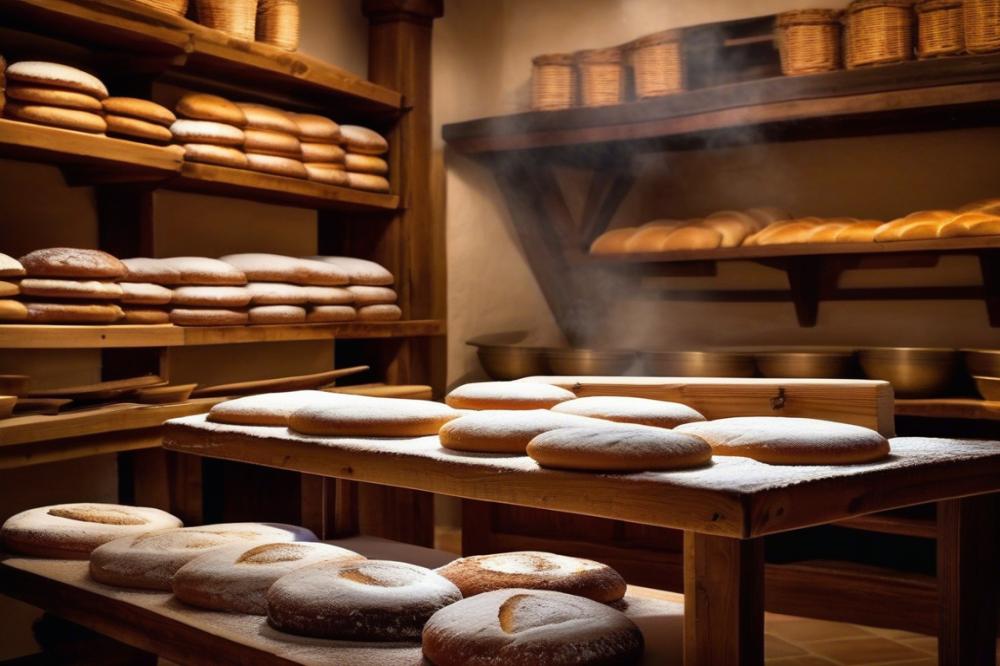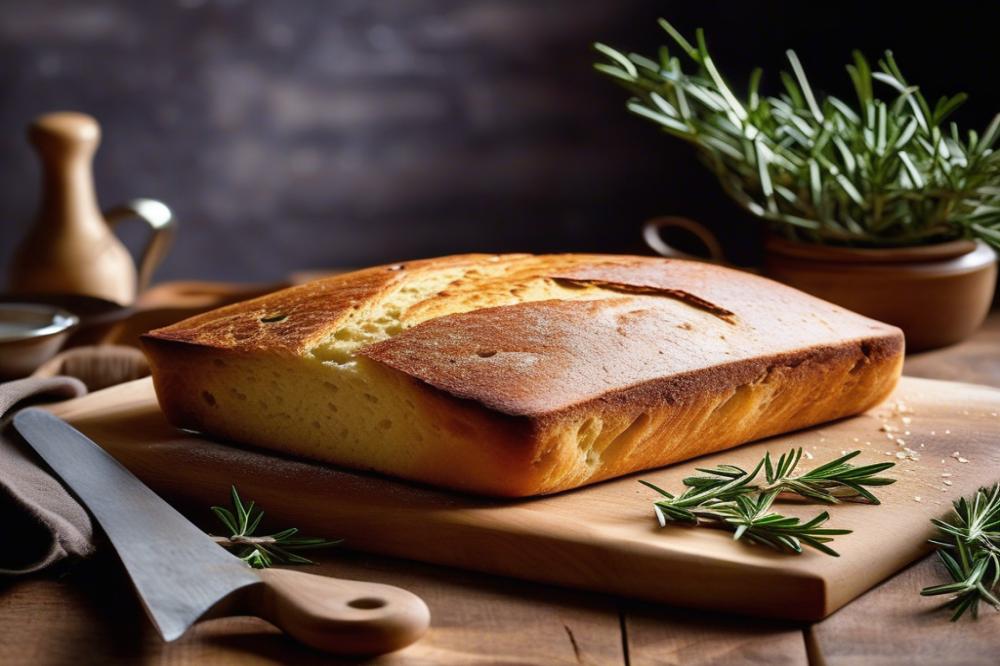Overview of Schiacciata as a Traditional Tuscan bread
Schiacciata is a delightful example of traditional Tuscan bread, offering a unique taste and texture. This flatbread is known for its simplicity and deliciousness. Made primarily from flour, water, yeast, and salt, its preparation can often include olive oil and fresh herbs. The use of high-quality ingredients makes this rustic bread a staple in many Italian kitchens.
In Italian cuisine, Schiacciata holds a special place. It symbolizes not just a recipe, but also a cultural tradition. Many families have their own homemade versions, passed down through generations. Baking this bread brings people together, as its aroma fills homes and creates a warm atmosphere.
Gatherings in Tuscany often feature Schiacciata. Friends and family enjoy sharing stories over a warm loaf, often topped with various toppings or simply enjoyed with a drizzle of olive oil. This bread reflects the heart of Tuscan culture. Its easy recipe makes it accessible, inviting everyone to participate in the baking process. Whether served at special occasions or daily meals, this traditional Italian bread represents more than just food—it’s a celebration of community and togetherness.
What is Schiacciata?

Schiacciata is a type of flatbread that has its roots in Tuscany, Italy. This rustic bread is known for its simple ingredients and rich flavor. Made mainly from flour, water, yeast, and salt, it often features generous amounts of olive oil, which adds to its texture and taste. The bread is typically baked until golden and crispy on the outside, while remaining soft inside.
Cultural significance plays a big role in the popularity of this Tuscan bread. It is often enjoyed during family gatherings, festivals, and meals. Variations of schiacciata can be found all over Tuscany, with each region or village putting its twist on the traditional recipe. Some may include herbs like rosemary or toppings such as onions and tomatoes. These adaptations reflect local tastes and customs, making each bread a little different.
When comparing schiacciata with other types of Italian breads, some key differences emerge. For instance, focaccia shares similarities in ingredients but tends to be thicker and more focused on toppings. Ciabatta, another well-known bread, has a chewier texture and a more complex flavor due to its longer fermentation process. Schiacciata stands out because it emphasizes the use of olive oil and is often flatter than other breads. This flatbread is not only easy to make at home but also provides a canvas for creativity in toppings and flavors.
Ingredients and Cooking Instructions

Fresh Ingredients List with Quantities
- 500g all-purpose flour
- 300ml warm water
- 10g active dry yeast
- 10g salt
- 60ml extra-virgin olive oil
- Fresh herbs (rosemary, thyme) to taste
- Coarse sea salt for topping
Nutritional Information per Serving
Each serving contains approximately:
- Calories: 250
- Fat: 8g
- Carbohydrates: 38g
- Protein: 6g
Detailed Cooking Instructions
This traditional recipe is straightforward and rewarding. Begin by mixing the yeast with warm water in a large bowl. Let it rest for about 5 minutes until it becomes frothy.
Add the salt and olive oil to the yeast mixture. Then, gradually incorporate the flour, mixing with a wooden spoon or your hands. Knead the dough for about 10 minutes on a floured surface until it is smooth and elastic.
Now, place the dough in a lightly greased bowl. Cover it with a damp cloth and let it rise in a warm area for about an hour. The dough should double in size during this time. Patience is key here.
After the dough has risen, punch it down gently to release the air. Transfer the dough to a floured workspace. Roll it out into a large rectangle, about 1 cm thick. Then, place this on a baking sheet lined with parchment paper.
Use your fingers to create dimples on the surface of the dough. Drizzle extra-virgin olive oil generously over the top. Scatter fresh herbs like rosemary and thyme for added flavor. Season with coarse sea salt to add a rustic touch.
Preheat your oven to 220°C (425°F) while the dough rests for another 20 minutes. This step is critical for getting a great crust.
After the resting period, bake in the preheated oven for 20-25 minutes or until golden brown. The aroma of baking Tuscan bread will fill your kitchen.
Tips for Achieving Perfect Texture and Flavor
For the best results, use high-quality olive oil. This ingredient contributes greatly to the flavor of your flatbread. Feel free to experiment with different herbs based on your preference.
Keep in mind that baking times may vary slightly based on your oven. Regularly check your bread to avoid over-baking. When done, the bread should sound hollow when tapped on the bottom.
Allow your homemade rustic bread to cool for a few minutes before slicing. This will improve the texture and flavor. Serve warm, and enjoy a piece of Italian cuisine right at home!
Baking Techniques and Tips

Essential baking tools and equipment
To create a delicious batch of Tuscan bread, gather some essential tools. A large mixing bowl is a must for combining ingredients. A wooden spoon or dough scraper will help in mixing and kneading. You’ll also need a baking sheet or baking stone for the best crust. A measuring cup and spoons are important for accuracy. Lastly, having a clean kitchen towel for covering the dough is crucial. These simple tools make the process smoother and more enjoyable.
Optimal baking conditions
Understanding the right temperature and time is vital. Preheat your oven to a robust 450°F (232°C) for optimal results. A hot oven helps achieve that crispy exterior. Each batch typically bakes for about 20 to 25 minutes. The bread should turn a lovely golden brown. That color indicates it’s done and ready to eat. Avoid opening the door too often, as this lets heat escape.
Common mistakes to avoid
Many home bakers make a few common errors. One frequent issue is not letting the dough rise enough. Allow the dough to double in size during the first rise. This process greatly affects texture. Another mistake is using too much flour when kneading. This can lead to a dry and dense flatbread. Lastly, be cautious with the oven temperature. An overly hot oven can burn the outside while keeping the inside undercooked. Paying attention to these details helps create perfect homemade rustic bread.
Suggestions for enhancing flavor
Adding herbs and toppings can elevate the flavors of your bake. Consider using rosemary, thyme, or oregano for a delightful aroma. Mixing fresh or dried herbs into the dough adds depth. Drizzling olive oil on top just before baking enhances richness. After baking, toppings like sea salt or garlic can provide a pleasing crunch. For those who enjoy a twist, try adding sun-dried tomatoes or olives. These ingredients create a flavorful experience unique to Italian cuisine. Experimenting with these suggestions makes each loaf special.
Serving Suggestions and Variations
Traditional Ways to Serve Schiacciata
This Tuscan bread can be enjoyed in various ways. Traditionally, it is often served warm and drizzled with high-quality olive oil. Slices may be shared as part of an antipasti platter. Dipping it into balsamic vinegar adds a rich flavor. It perfectly complements fresh tomatoes and cheese, making a colorful starter. You might also enjoy it alongside soups, where its rustic texture enhances the dish. Simple toppings like sea salt and rosemary elevate the experience.
Pairing Ideas (Wines, Cheeses, and Dips)
When it comes to wine pairings, a glass of Chianti is a classic choice. This red wine aligns well with the flavors of the flatbread. For cheese, choose options like Pecorino or aged Parmigiano-Reggiano. These cheeses add depth to each bite. Dips can also enhance your meal. A rich olive tapenade offers a savory touch. Alternatively, try a fresh herb pesto for a burst of flavor.
Creative Variations to Try
Experimenting with toppings can turn an easy recipe into something special. Think about adding sun-dried tomatoes or caramelized onions for sweetness. You might also spice things up with chili flakes or za’atar. These additions create a more unique flavor profile. If you enjoy savory pastries, consider fillings like mozzarella or prosciutto. A hint of garlic can give it a delightful aroma. Sweet variations could include topping with honey and nuts. Each of these twists brings a new taste to this beloved bread.
The Cultural Role of Schiacciata in Tuscany
Historical Context of Tuscan Bread
Schiacciata has deep roots in Tuscan cuisine, dating back centuries. This flatbread symbolizes the region’s agricultural heritage. Traditionally, it was made by local families using simple ingredients. Homemade versions often included flour, water, yeast, and a generous amount of olive oil. This rustic bread reflects the values of Tuscan cooking, where fresh ingredients and basic techniques shine through. Many believe that its history is tied to the need for quick, nourishing food for farmworkers.
Importance in Local Festivals and Community Gatherings
Celebrations across Tuscany often feature this beloved dish. During local festivals, vendors serve it warm, topped with herbs like rosemary. Community gatherings also include this tasty treat, bringing people together. Families create their own variations, adjusting the toppings based on what is in season. Sharing this dish fosters a sense of togetherness and enhances the festive atmosphere. It becomes more than just food; it is a symbol of connection among residents.
Personal Anecdotes and Stories Related to Schiacciata
Many residents have cherished memories connected to this bread. Someone may recall baking alongside their grandparents, learning the traditional recipe passed down through generations. Others might talk about memorable picnics where slices of schiacciata were enjoyed under the Tuscan sun. These stories highlight the role of cooking as a way to bond with loved ones. They reveal how the act of baking can create lasting family traditions. Each bite carries a sense of history and warmth, treasured by those who understand its significance.
Wrapping Up the Delight of Tuscan Flatbread
This delicious bread holds a significant place in Tuscan cuisine. Celebrated for its soft texture and rich taste, it reflects the region’s agricultural heritage. Many families pass down recipes through generations. Each variation tells a story of local ingredients and traditions.
Baking at home can be a rewarding experience. With simple ingredients and a little patience, anyone can create this delightful treat. Don’t shy away from experimenting with the dough or toppings. Herbs, olives, and even cheese can add a personal touch. A little creativity may lead to a new favorite recipe.
If you decide to embark on this baking adventure, remember to enjoy the process. Share your creations with friends and family. Gathering around freshly baked bread is an experience to cherish. Your experiences and adjustments can lead to discussions about this beloved Tuscan bread. We invite you to let us know how your version turns out, as well as any unique twists you may experiment with.

